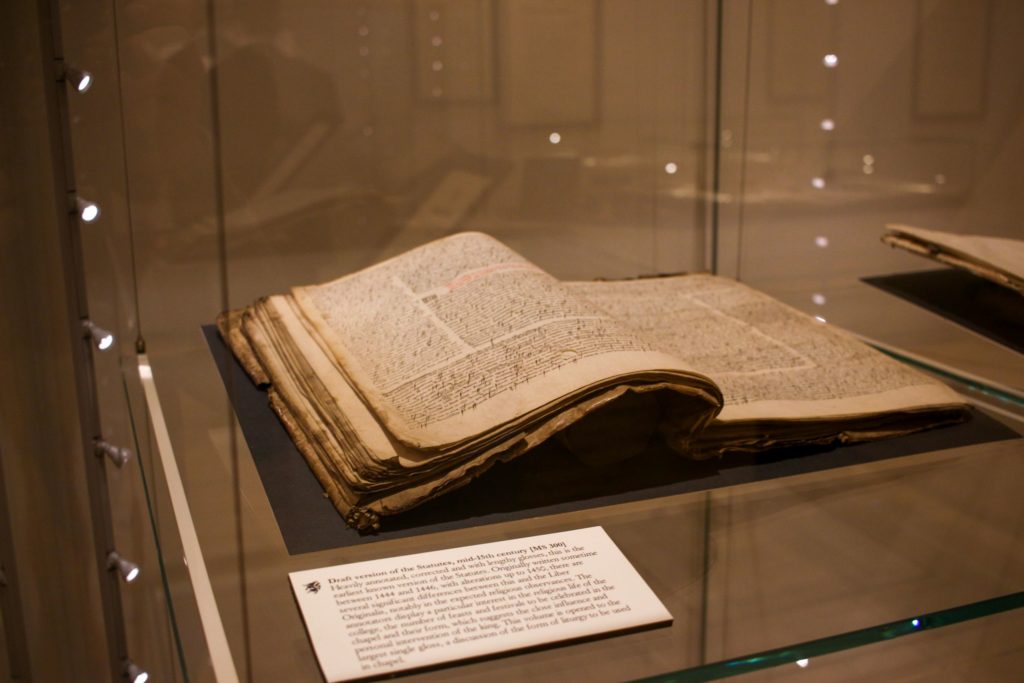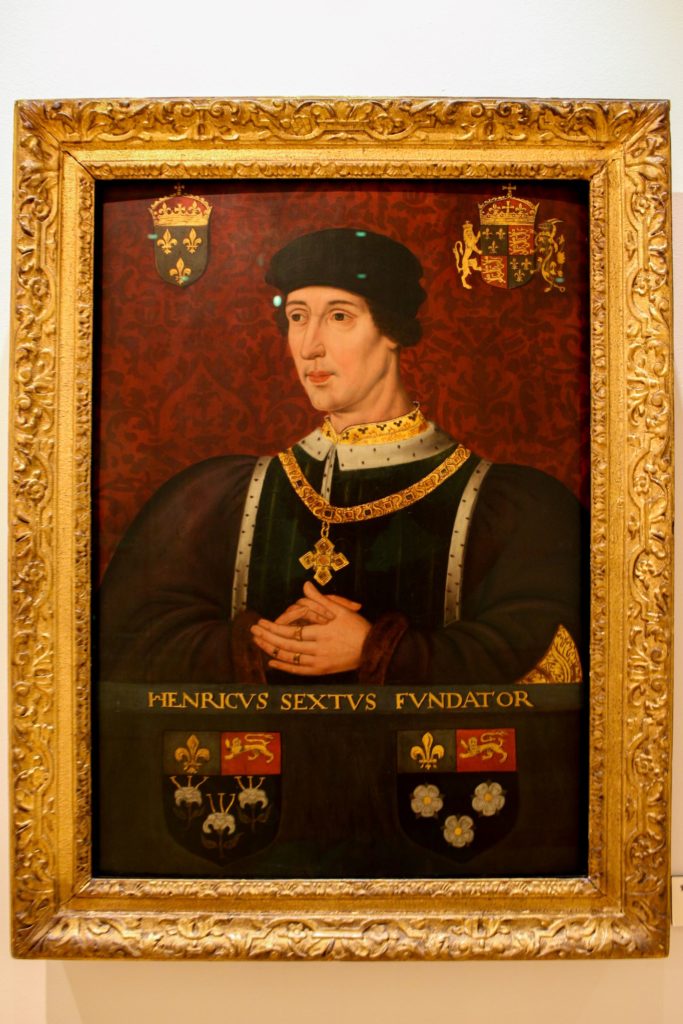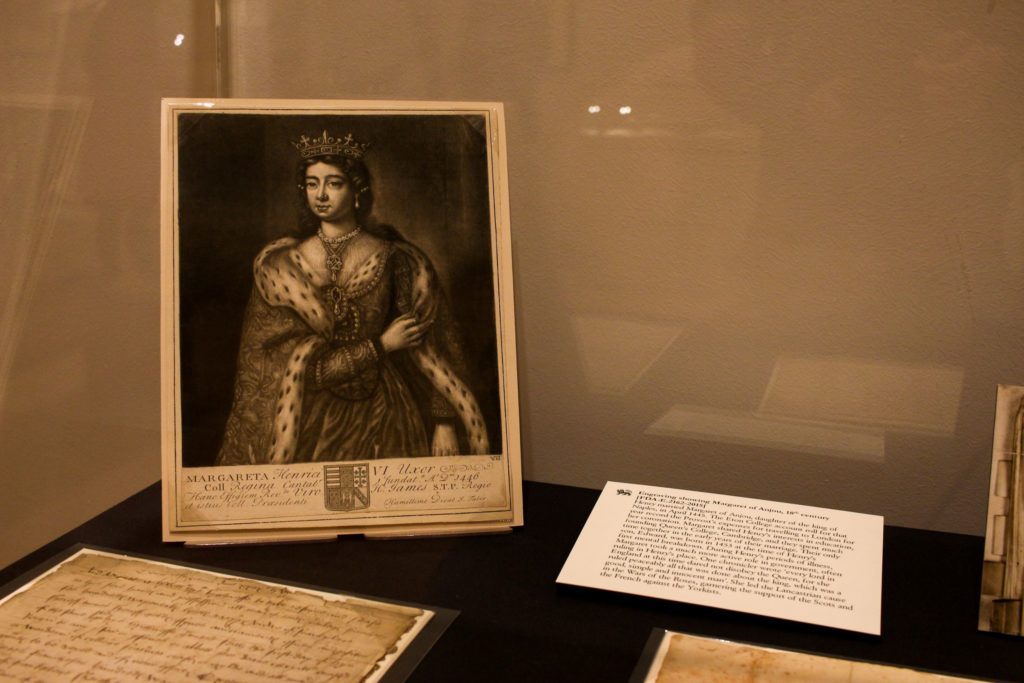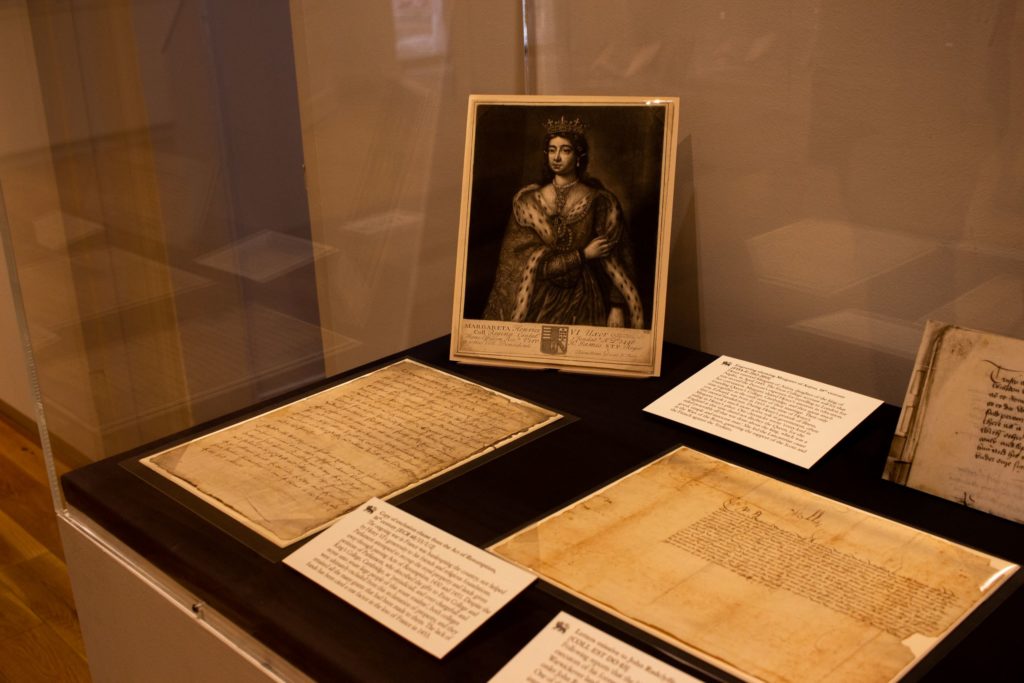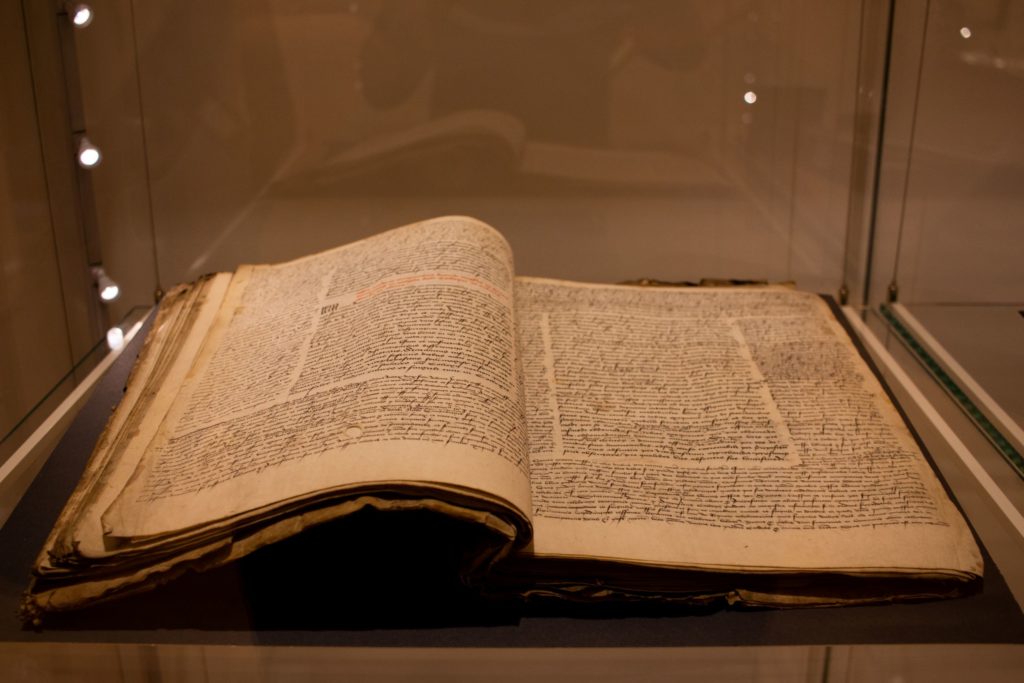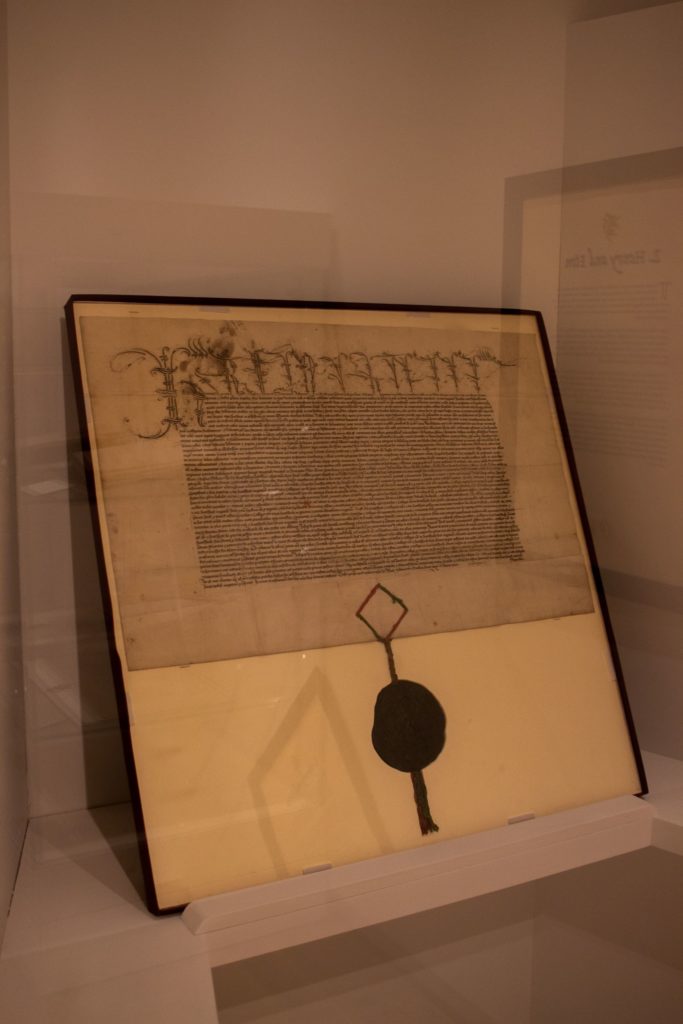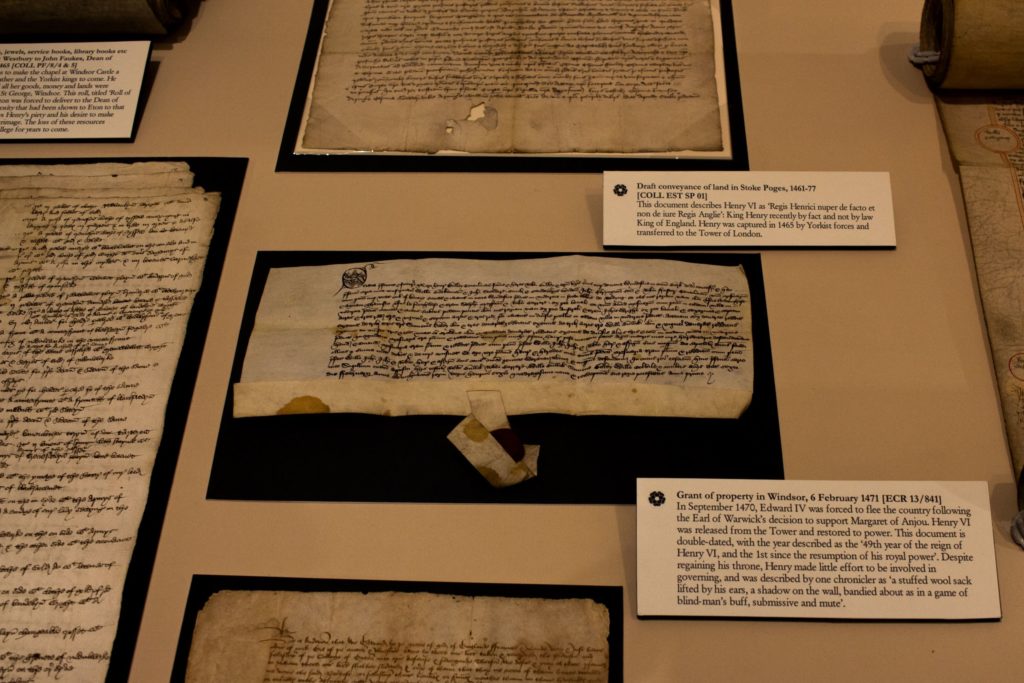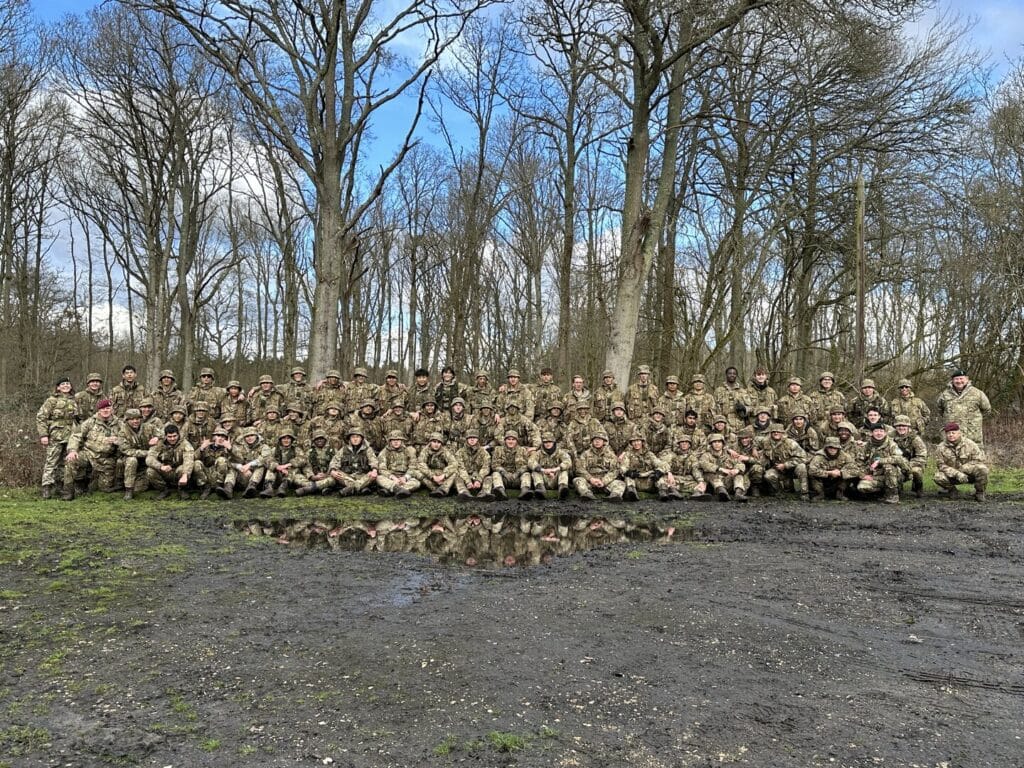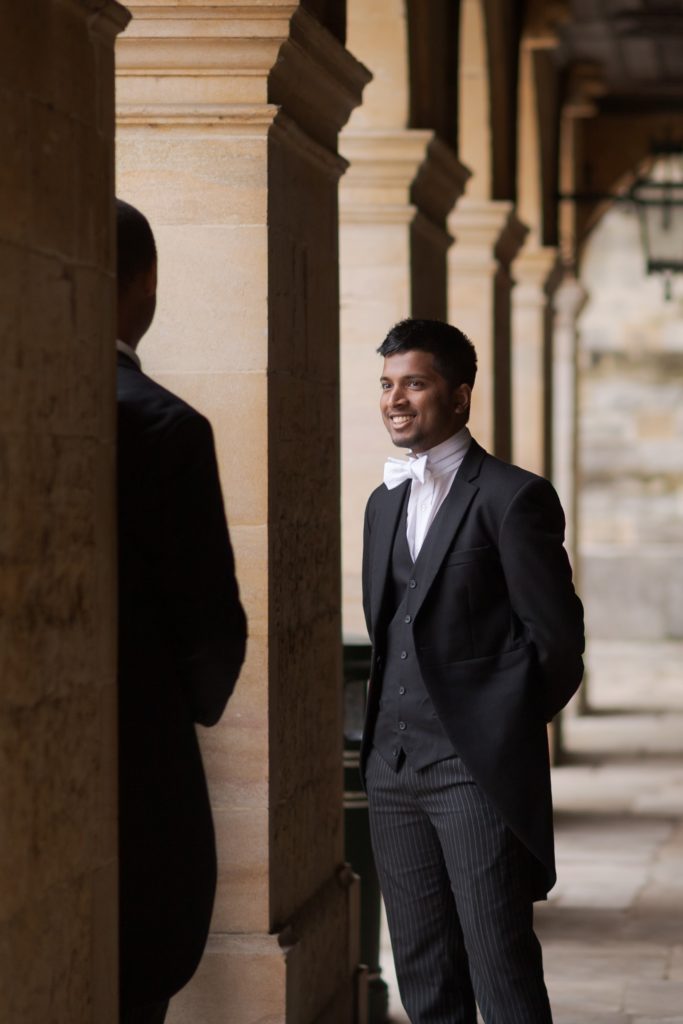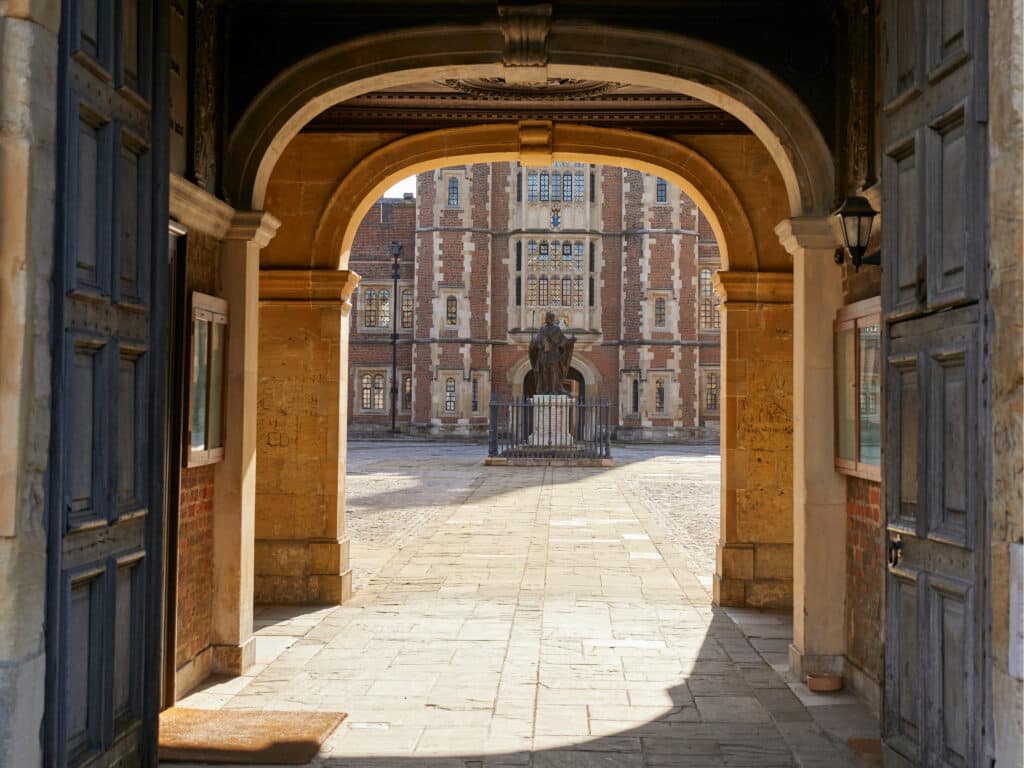Press Officer and Year 13 pupil Sacha M T visited the new exhibition in Eton’s Verey Gallery to learn more about Henry VI and his founding of the College. You can read more about the design of the exhibition here
As a pupil at Eton, it is wonderful to learn about Henry VI and the founding of our school. For starters, it is impressive to think that Eton is still here 581 years on, despite Henry VI being deposed twice, England’s conversion to Protestantism, and countless other historical upheavals!
It is also fascinating to consider the personal impact he has had on our lives. These ideas were made more real for me when I visited the Verey Gallery in School Yard, which is hosting the new College Collections exhibition.
After an overview of Henry VI’s childhood, first as prince, then king from the age of 10, the exhibition largely focuses on his connection with Eton after he founded it at the age of 18.
An object that stood out to me was the impression and engraving of the original seal of the College. Not only was it incredible to see a wax seal that has survived almost completely undamaged, but it was interesting to note that the symbol chosen was the Assumption of the Virgin Mary, a symbol that I have also noticed at the far end of School Yard by the Cloisters. It is an image that is still used on Eton’s legal documentation to this day.
There is a special focus on College Chapel in an ante-chamber of the gallery, where a brass model of the building from the time of William IV resides. We are reminded that the original design of the chapel was based on a mammoth footprint, aiming to extend all the way down Keate’s Lane. In fact, if you are wandering around the lanes of Eton you might notice a cross built into the wall of Carter House, which indicates the end of the chapel ‘as the founder intended’.
Henry VI also provided numerous relics for the chapel, including relics of St John of Bridlington, pieces of the True Cross and drops of the precious blood of our Lord. This shows that Henry was determined to create not only a place of religious education, but also attempting to give it the status of a place of pilgrimage.
It was also wonderful to read the Consolidation Charter, made on the 5th of March 1446, which outlined the vast number of lands, rectories and manors given to Eton. These gifts were exempt from the jurisdictions of the king’s marshals and therefore not bound by the usual fees paid to the crown. This made Eton one of the richest institutions in the country. I had never before realised the generosity of Henry VI, beyond the founding of the school, and this object served to remind us that this was not a half-hearted act of kindness, but an act that demonstrated real concern for and interest in Eton’s future welfare.
His generosity was made more impressive when I learnt that Henry VI was also facing problems of debt following from wars in France which amounted to a total of £372,000. Adjusted for inflation, that amounts to a financial burden of over £300 billion today!
Despite Henry VI’s acts of kindness, piety, forgiveness and interest in education he was not considered a suitable king because of his lacklustre capacity for war, which resulted in the loss of Normandy, and of course the Wars of the Roses.
However, in death a cult in his memory was established. He was declared responsible for posthumous miracles, many involving children, when Richard III moved his body to St George’s Chapel in Windsor Castle. Henry VI’s cap was laid by his tomb and if worn, it was said to relieve migraines. Visitors would of course have to pay a sum to wear the cap, but whilst the cap is long gone, amazingly the money box remains to this day.
With England’s conversion to Protestantism, Henry VI’s cult ended, but I can say with certainty that he is still remembered with grateful thanks by those at Eton.

